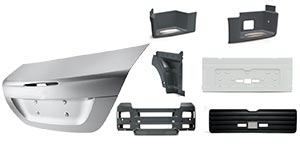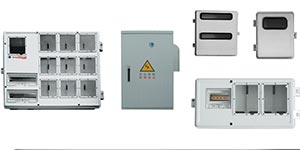Email: info@hdfiberglass.com Whatsapp: +86 15200033566
Views: 0 Author: Site Editor Publish Time: 2024-03-01 Origin: Site








As an enthusiast and expert in the fiberglass manufacturing industry, I'm excited to delve into the fascinating realm of fiberglass roving and its applications in Sheet Molding Compound (SMC). With years of experience and a passion for innovation, I aim to provide valuable insights into how this versatile material contributes to the production of high-quality composite products.
Fiberglass roving serves as the backbone of composite materials, offering exceptional strength, durability, and versatility. Composed of continuous strands of glass fibers, it provides reinforcement in various composite applications, including SMC. The quality of roving plays a crucial role in determining the performance and properties of the final composite product.

Enhanced Mechanical Properties: Fiberglass roving reinforces the SMC matrix, significantly improving mechanical properties such as tensile strength, flexural strength, and impact resistance. This reinforcement enables the production of lightweight yet robust components for various industries, including automotive, aerospace, and construction.
Excellent Surface Finish: The uniform distribution of fiberglass roving in SMC results in a smooth surface finish with minimal defects. This aesthetic appeal makes SMC ideal for applications where visual appearance is crucial, such as automotive body panels and architectural components.
Resin Impregnation: Fiberglass SMC roving is impregnated with thermosetting resin, typically polyester or vinyl ester, to form a pre-preg material. This ensures uniform resin distribution and facilitates moldability during the SMC manufacturing process.
Compression Molding: The pre-preg material, along with other additives such as fillers and catalysts, is placed into a mold cavity and subjected to high pressure and temperature. This compression molding process allows the resin to cure, bonding the fiberglass reinforcement and forming the desired shape of the SMC component.
Automotive Components: SMC panels, including hoods, fenders, and trunk lids, benefit from the lightweight yet strong characteristics of fiberglass roving reinforcement. This results in fuel-efficient vehicles with improved performance and crashworthiness.
Electrical Enclosures: SMC enclosures for electrical equipment leverage the electrical insulation properties of fiberglass roving, ensuring safety and reliability in various industrial and outdoor environments.


In conclusion, fiberglass roving plays a pivotal role in enhancing the performance, aesthetics, and versatility of Sheet Molding Compound (SMC) materials. Its remarkable properties make it a preferred choice for manufacturers across diverse industries, seeking to create lightweight, durable, and visually appealing composite products. As a leading manufacturer in the fiberglass industry, Hebei HaiDing Fiberglass Manufacturing Co., Ltd. remains committed to providing tailored solutions and top-notch quality products to meet the evolving needs of our clients worldwide.
Is it better to choose emulsion or powder for glass fiber chopped strand mat?
Building Stronger Ships: Application Cases And Technical Advantages of Yuniu Chopped Glass Fiber Mat
Yuniu Fiberglass Chopped Strand Mat - Helping Your Project To Success
Corporate Visual Identity of Hebei HaiDing Fiberglass Manufacturing Co., Ltd.
What does the price increase of fiberglass products (chopped strand mat) mean?
Fiberglass Materials for Electrical Insulation and Electronics Applications